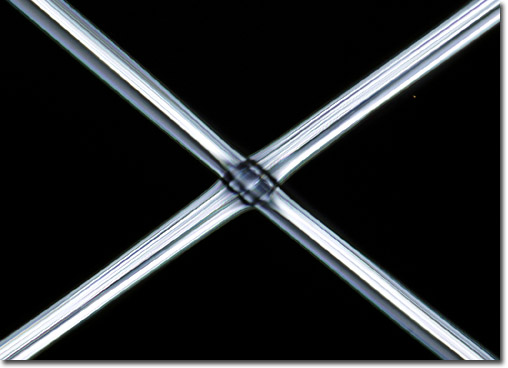|
Manufactured from a renewable resource, acetate fiber is fashioned from the cellulose of softwood trees that is exposed to acetic acid and acetic anhydride before it is undergoes a partial hydrolysis to form a substance that can be easily dissolved in acetone. The solution formed by this process is passed through the small openings of a spinneret to form fibers, which are transferred into a chamber where they are exposed to warm air. The acetone readily evaporates in this environment, leaving behind the cellulose acetate fibers, which are wound on reels for later use in a wide range of products, such as ties, sweaters, lingerie, and bathing suits.
|
